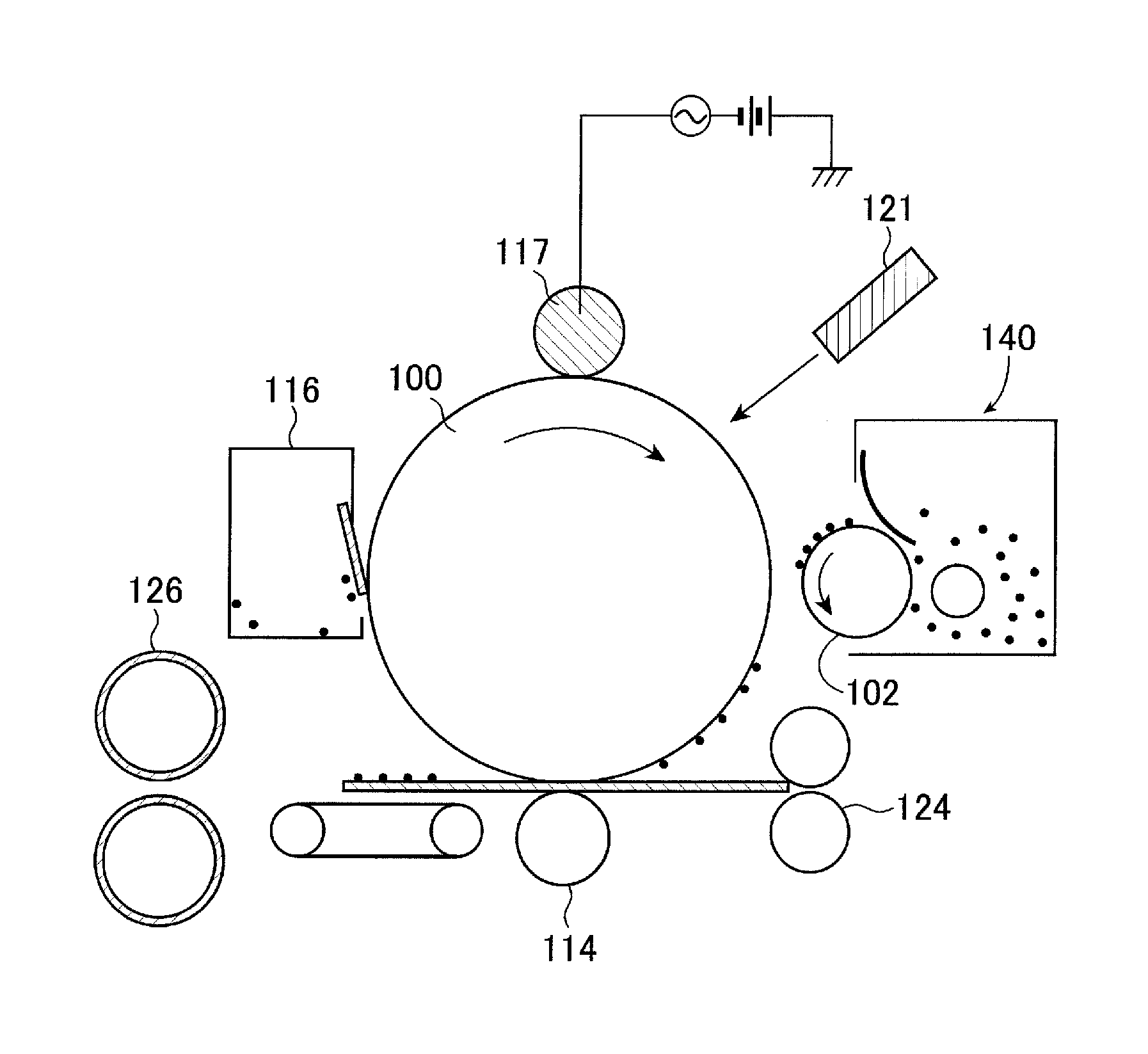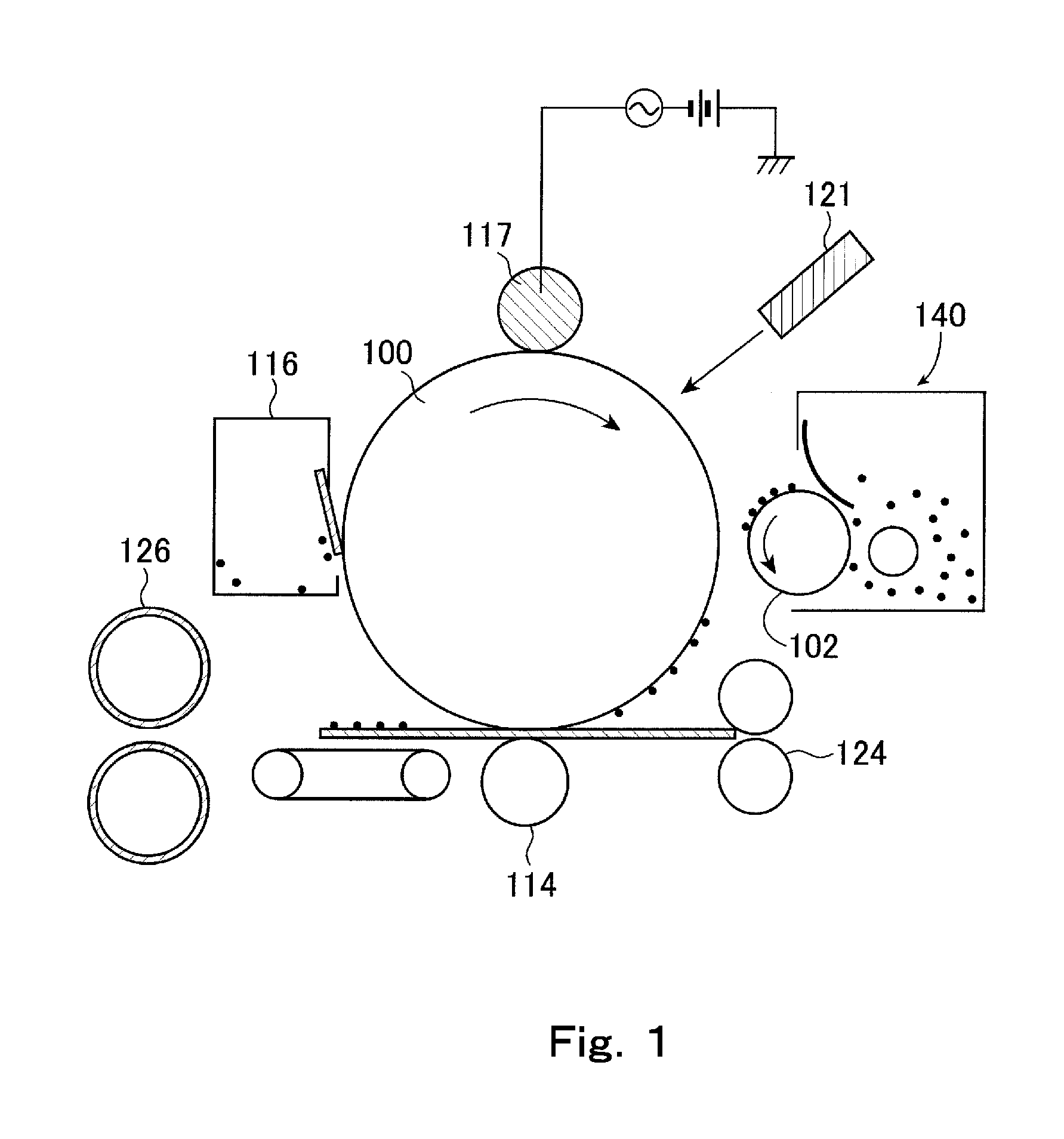Toner
a technology of toner and nozzle, applied in the field of toner, can solve the problems of affecting the performance of toner, affecting the development process, and deteriorating toner, and achieve the effects of reducing the occurrence of waste toner spillage, and reducing the amount of toner accumulated
- Summary
- Abstract
- Description
- Claims
- Application Information
AI Technical Summary
Benefits of technology
Problems solved by technology
Method used
Image
Examples
example 1
[0374]An LBP-6300 (Canon Inc.) was used as the image-forming apparatus, and the process speed was increased about 1.5 times to 300 mm / sec.
[0375]The 14 mm diameter developing sleeve in the above apparatus was replaced with a developing sleeve having a diameter of 10 mm, the 24 mm diameter photosensitive member was replaced with a photosensitive member having a diameter of 18 mm, and the new developing sleeve and photosensitive member were each loaded into a toner cartridge. In addition, a modified cartridge was used in which the toner filling capacity was increased 1.2-fold and the cleaning blade contact pressure was lowered to about one-half the value at 3 kgf / m.
[0376]In the image-forming apparatus in which the small-diameter developing sleeve has been installed, the image density and fogging that result from toner deterioration can be rigorously evaluated by increasing the process speed. In addition, using the small-diameter photosensitive member, faulty cleaning can be rigorously ...
examples 2 to 30
, Comparative Examples 1 to 12
[0394]In Examples 2 to 30, evaluations were carried out in the same way as in Example 1, but using Toners 2 to 30 instead of Toner 1. Likewise, in Comparative Examples 1 to 12, evaluations were carried out using Comparative Toners 1 to 12. As a result, in substantially all the comparative toners, the image density during the last half of use in durability tests worsened to an undesirable level. The evaluation results are shown in Table 7.
[0395]
TABLE 7Image densityImage density(start of(second half ofFaultyWaste tonerdurability test)durability test)FoggingcleaningspillageExample 1Toner 1A (1.48)A (0.06)A (0.3)AAExample 2Toner 2A (1.49)A (0.05)A (0.4)AAExample 3Toner 3A (1.49)A (0.05)A (0.3)AAExample 4Toner 4A (1.49)A (0.05)A (0.3)AAExample 5Toner 5A (1.48)A (0.06)A (0.7)AAExample 6Toner 6A (1.48)A (0.06)A (0.5)AAExample 7Toner 7A (1.46)A (0.08)A (0.8)AAExample 8Toner 8A (1.45)A (0.09)A (0.7)BAExample 9Toner 9A (1.47)A (0.09)A (0.8)AAExample 10Toner 10A (...
PUM
| Property | Measurement | Unit |
|---|---|---|
| number-average particle diameter | aaaaa | aaaaa |
| number-average particle diameter | aaaaa | aaaaa |
| number-average particle diameter | aaaaa | aaaaa |
Abstract
Description
Claims
Application Information
 Login to View More
Login to View More - R&D
- Intellectual Property
- Life Sciences
- Materials
- Tech Scout
- Unparalleled Data Quality
- Higher Quality Content
- 60% Fewer Hallucinations
Browse by: Latest US Patents, China's latest patents, Technical Efficacy Thesaurus, Application Domain, Technology Topic, Popular Technical Reports.
© 2025 PatSnap. All rights reserved.Legal|Privacy policy|Modern Slavery Act Transparency Statement|Sitemap|About US| Contact US: help@patsnap.com



